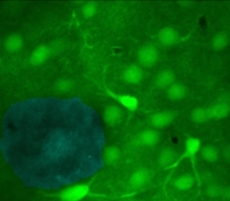Longitudinal PET-MRI reveals β-amyloid deposition and rCBF dynamics and connects vascular amyloidosis to quantitative loss of perfusion
 The dynamics of β-amyloid deposition and related second-order physiological effects, such as regional cerebral blood flow (rCBF), are key factors for a deeper understanding of Alzheimer's disease (AD). We present longitudinal in vivo data on the dynamics of β-amyloid deposition and the decline of rCBF in two different amyloid precursor protein (APP) transgenic mouse models of AD. Using a multiparametric positron emission tomography and magnetic resonance imaging approach, we demonstrate that in the presence of cerebral β-amyloid angiopathy (CAA), β-amyloid deposition is accompanied by a decline of rCBF. Loss of perfusion correlates with the growth of β-amyloid plaque burden but is not related to the number of CAA-induced microhemorrhages. However, in a mouse model of parenchymal β-amyloidosis and negligible CAA, rCBF is unchanged. Because synaptically driven spontaneous network activity is similar in both transgenic mouse strains, we conclude that the disease-related decline of rCBF is caused by CAA.
The dynamics of β-amyloid deposition and related second-order physiological effects, such as regional cerebral blood flow (rCBF), are key factors for a deeper understanding of Alzheimer's disease (AD). We present longitudinal in vivo data on the dynamics of β-amyloid deposition and the decline of rCBF in two different amyloid precursor protein (APP) transgenic mouse models of AD. Using a multiparametric positron emission tomography and magnetic resonance imaging approach, we demonstrate that in the presence of cerebral β-amyloid angiopathy (CAA), β-amyloid deposition is accompanied by a decline of rCBF. Loss of perfusion correlates with the growth of β-amyloid plaque burden but is not related to the number of CAA-induced microhemorrhages. However, in a mouse model of parenchymal β-amyloidosis and negligible CAA, rCBF is unchanged. Because synaptically driven spontaneous network activity is similar in both transgenic mouse strains, we conclude that the disease-related decline of rCBF is caused by CAA.
see more: http://www.nature.com/nm/journal/vaop/ncurrent/full/nm.3734.html
- 74 views
